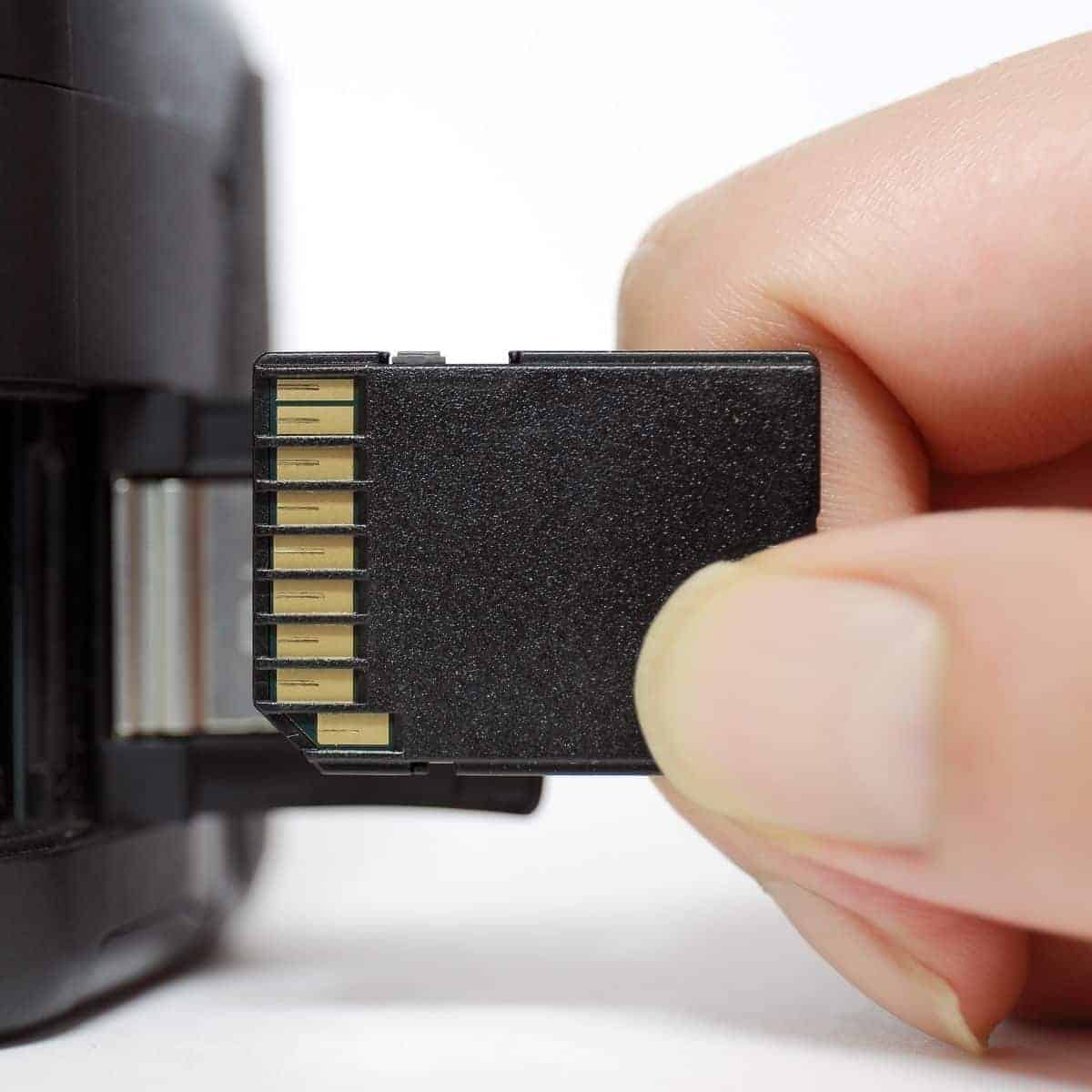Formatting an SD card wipes out all of the files on it. Learn how to properly format an SD card to erase all of its data.

There are many types of Secure Digital (SD) cards, including SD, mini SD, and micro SD. Regardless of the type, SD cards are small but powerful for storage.
Related: How to clean your camera lens
When you purchase a new SD, it’s pre-formatted. So, you can generally start storing files on it immediately.
However, a used SD card must be formatted before use. Formatting an SD card erases everything on it.
Related: What’s a polarizing filter?
It’s also a good way to clear up some space for new files.
The following are several methods to format an SD card. If you have important files that you want to save, be sure to back up the SD card before formatting.
Related: How to remove a background in Photoshop
How to format an SD card with a camera
One of the easiest ways to format an SD card is using a camera. While the steps vary slightly depending on the manufacturer, they’re very similar. Take the following steps to format an SD card with a camera:
- Insert the SD card into the SD card slot.
- Turn on the camera.
- Click Menu.
- Scroll to the Setup menu.
- Click Format.
- Confirm that you want to format the SD card.
- Wait for the camera to format the SD card.
- Turn off the camera once it’s complete.
Related: Which camera has the fastest shutter speed?
How to format an SD card on a Mac
To format an SD on a Mac device, take the following steps:
- Insert the SD card into the SD card slot.
- Open Finder.
- Click Go.
- Select Utilities.
- Double-click Disk Utility.
- Click on the SD card.
- Click Erase.
- Click Format to open a drop-down menu.
- Select ExFat if your SD card is 64 GB or larger. Select MS-DOS (FAT) if it’s 32 GB or smaller.
- Click Erase.
How to format an SD card using Windows
If your computer is running Windows 10, take the following steps to format an SD card:
- Insert the SD card into the SD card slot or external memory card reader.
- Open File Explorer.
- Click This PC. With older versions of Windows, click My Computer.
- Select the SD card.
- Click Manage.
- Click Format.
- In the Format SD Card window, click the File system dropdown and click FAT32.
- If it’s your first time formatting the SD card, uncheck the Quick Format checkbox. Otherwise, make sure it’s checked.
- Click Start.
- Click OK to proceed with the formatting.
- Once it’s complete, eject the SD card.
How to format an SD card using an Android device
Android devices, such as phones, tablets, and cameras, allow you to format SD cards. More specifically, microSD cards.
Take the following steps to format an SD card with an Android device:
- Open Settings.
- Tap Storage.
- Tap Advanced.
- Tap your SD card under Portable storage.
- Tap Format.
- Tap Format SD card.
What if the SD card won’t format?
If your SD card won’t format, write-protect may be on. Write-protect ensures that none of the data on the SD card can be changed, which is beneficial for protecting your files.
Related: How to become a successful freelance photographer
If you want to format an SD card with write-protect, you must turn it off.
First, eject the SD card. Once ejected, there’s a small switch on the SD card that you need to slide up from the lock position.
After you’ve turned off write-protect, you can format the SD card.
Conclusion
Formatting is the most efficient way to clear an SD card. Yes, you can manually delete files individually.
However, it takes more time and can lead to corrupted data. So, be sure to take the formatting route. It gives you a fresh slate for new data.
If you plan to give away your SD card, format it twice. Take random photos or fill the SD card with free stock images.
Then, format the SD card to ensure that the files aren’t recoverable.
Featured image courtesy of Canva.
